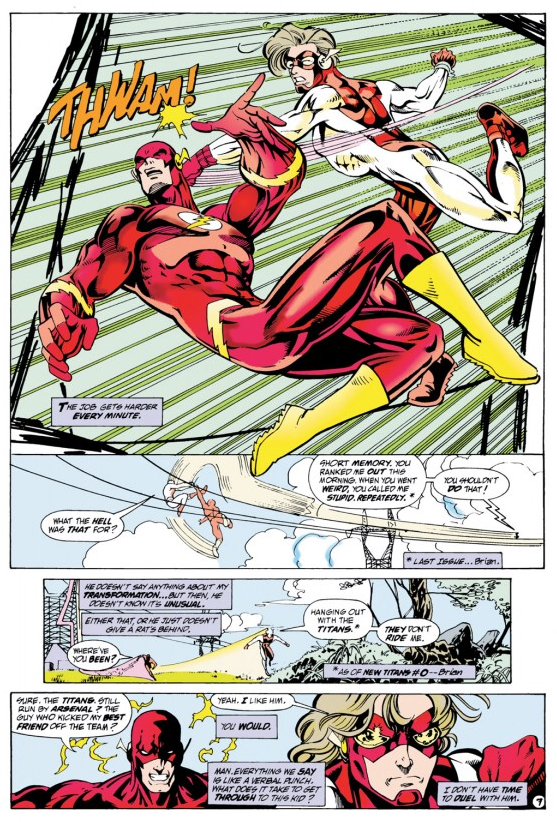We’ve been a little light on blog posts lately, but for good reasons!
Over the past year, I’ve been busy writing a few other projects. The first one is coming out in February 2019:

My contribution to this book is only one chapter – “Impulsive Students, Speedster Teachers, and Education in the 1990s” – and here’s a preview:
In 1994, DC Comics presented a potential poster child for 1990s adolescence: Bart Allen, a.k.a. Impulse—a time-displaced teen speedster from the future with a short attention span, entertainment-first obsession, disregard for adult instruction, and a habit of leaping-before-looking. This chapter focuses on mentors Impulse encounters along the way—namely Wally West and Max Mercury.
To frame my analysis of Bart’s teachers, I applied the 1998 text Approaches to Teaching by Fenstermacher and Soltis. And, of course, I used content from over two dozen different comic books. Here are a few examples:

Wally West (The Flash) is similar to an “executive teacher,” hastening with curriculum, outcome-oriented lessons, and direct instruction for his student Bart. Taken too far, this teaching can overwhelm the student, even one with super-speed. And the results can backfire . . .

In contrast to Wally, Max Mercury is more like a “therapist teacher,” also called a “fostering” or “facilitator” teacher by Fenstermacher and Soltis. But I doubt the authors envisioned a “therapist teacher” doing things like these . . .

As a “therapist teacher,” Max focuses his attention not only on Bart’s skills, but also on the teenager’s personal development — making friends, making decisions, experiencing effects of relationships and choices. Cultivating personal development means not always giving students an answer, even when they beg for it at super-speed:

Other times, a therapist teacher simply tells the student the honest truth, helping them refocus on the important goals:

What kind of teacher are you most like? Both approaches have strengths, some more advantageous in one situation or another.
Learn more when the book comes out February 2019. You can find it HERE and HERE.
In the meantime, we’ll revisit some of these topics here on this blog – hopefully sooner rather than later!






